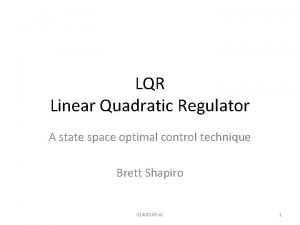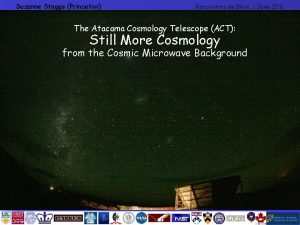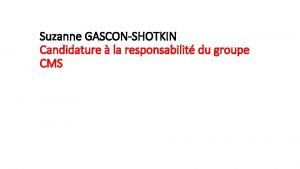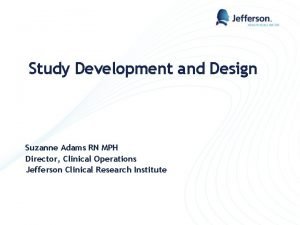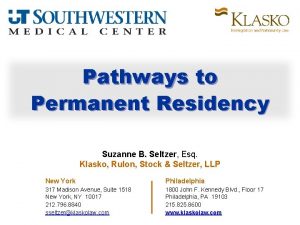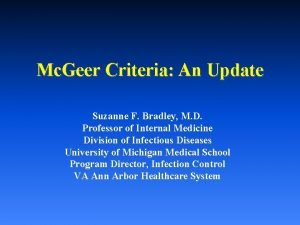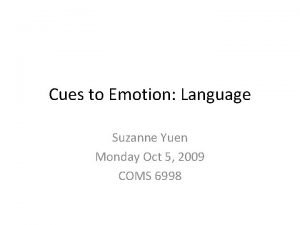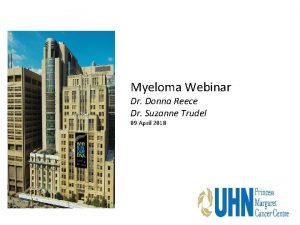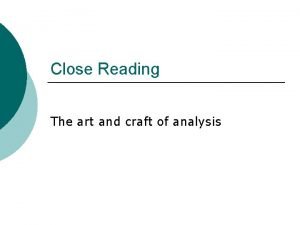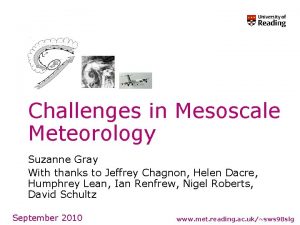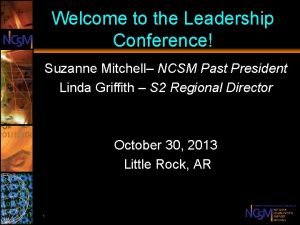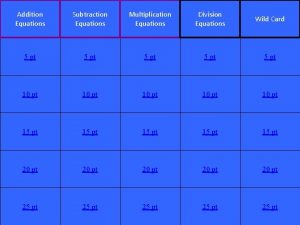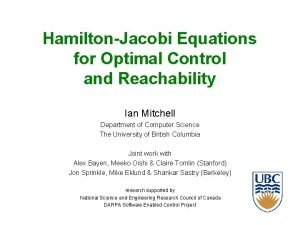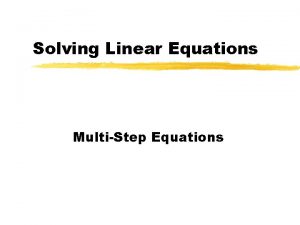Optimal Control in Integrodifference Equations Suzanne Lenhart Outline

































- Slides: 33

Optimal Control in Integrodifference Equations Suzanne Lenhart

Outline 1. Optimal Control Background 2. Harvest Example 3. Gypsy Moth

WHO ?

Lev Semyonovich Pontryagin, monument on a building on Leninsky Prospekt, Moscow.

Optimal control and Pontryagin's Maximum Principle Pontryagin and his collaborators developed optimal control theory for ordinary differential equations about 1950. Pontryagin's KEY idea was the introduction of the adjoint variables to attach the differential equations to the objective functional (like a Lagrange multiplier attaching a constraint to a pointwise optimization of a function). This principle gives necessary conditions for optimal controls and states. WE NEED TO DERIVE OUR OWN NECESSARY CONDITIONS HERE.

Basic Idea Start with a system for modeling the situation Decide where to put the controls and on their bounds ---balancing opposing factors in functional Design an appropriate objective functional After proving existence of optimal control, derive necessary conditions for the optimal control WILL GIVE MORE DETAILS Compute the optimal control numerically ---investigate dependence on various parameters

NECESSARY CONDITIONS

CHARACTIZATION OF OPTIMAL CONTROL

ORDER OF EVENTS IN OPTIMAL CONTROL OF HARVESTING MODELS WITH INTEGRODIFFERENCE EQUATIONS Lenhart and Peng Zhong (DCDS, 2013) EVENTS: GROWTH, DISPERSAL, HARVEST



MAXIMIZE PROFIT


With Quadratic Costs: V term



Gypsy Moth Lymantria dispar Europe and Asia

Ch 2: Non-Spatial Goal Investigate management strategies in gypsy moth models using optimal control techniques. spatial temporal equations models with integrodifference

Population dynamics • Pathogens • Outbreaks collapse after 1 -3 years • Result of disease epizootics • Gypsy moth nucleopolyhedrosis virus (NPV) • Regulate population at high densities

THIS WORK M. Martinez, K. A. J. White and S. Lenhart, Optimal control of integrodifference equations in a pest-pathogen system, Disc. and Conti. Dynamical Systems B 2015. In US, continuing work of Sandy Leibhold and Greg Dwyer and Kyle Haynes and others

Model formulation N density of gypsy moth population Z density of virus population (nucleopolydrosis virus) u control (via Gypchek) with yearly time steps

Population Dynamics For F and G, we use ideas from Nicholson-Bailey model

Population Dynamics the average per capita number of moths produced Probability that a moth does not become infected Density dependent probability that a new moth will survive until next generation

Population Dynamics Probability that virus survives over winter Probability that Moth gets infected Number of viral spores Provided by a moth cadaver

Kernels • Describe the dispersal of the population • Laplace, fat tails

Oscillations with spatial model

Objective functional Cost for spray Function of control Damage caused by defoliation Density of Gypsy Moth Lebesgue measurable

Results with no control (left) vs. control With constant spatial IC

Spatial Initial Conditions Aggregate

Results using the middle IC

Results, rotated view of OC

Conclusions • New results in Optimal Control Theory • Apply biocontrol where gypsy moth is at low densities • In future, try other control techniques besides optimal control, like adaptive management, feedback control and adaptive control.

Acknowledgements Thanks
 Optimal control lqr
Optimal control lqr Quotation sandwich examples
Quotation sandwich examples Suzanne staggs
Suzanne staggs Suzanne prou la reine de beauté
Suzanne prou la reine de beauté Suzanne sensabaugh
Suzanne sensabaugh Suzanne bakken
Suzanne bakken Suzanne gascon
Suzanne gascon Dr suzanne adams
Dr suzanne adams Suzanne kingon
Suzanne kingon Suzanne donaldson
Suzanne donaldson Suzanne seltzer
Suzanne seltzer Suzanne bradley
Suzanne bradley Suzanne van wijk
Suzanne van wijk Suzanne van der velde
Suzanne van der velde Stella ella ola lyrics
Stella ella ola lyrics Dr suzanne smith
Dr suzanne smith Dr suzanne elliott
Dr suzanne elliott Breathy voice
Breathy voice Suzanne menezes
Suzanne menezes Suzanne meade
Suzanne meade Suzanne kemperman
Suzanne kemperman Dr donna reece
Dr donna reece Litosfr
Litosfr Close reading the art and craft of analysis
Close reading the art and craft of analysis Suzanne keating
Suzanne keating Suzanne kapelari
Suzanne kapelari Suzanne merlis
Suzanne merlis Ostc mistar
Ostc mistar Dr suzanne mulder
Dr suzanne mulder Suzanne gray
Suzanne gray Entgegengesetzte konjunktionen
Entgegengesetzte konjunktionen Suzanne van der woude
Suzanne van der woude Suzanne sommers diet
Suzanne sommers diet Dr suzanne mitchell
Dr suzanne mitchell
